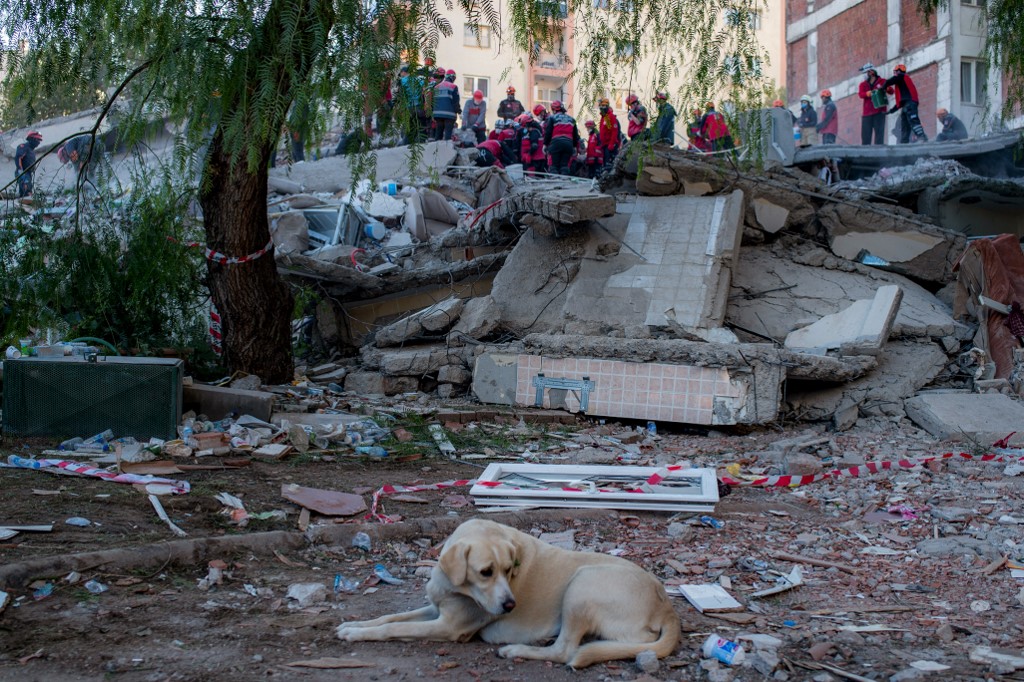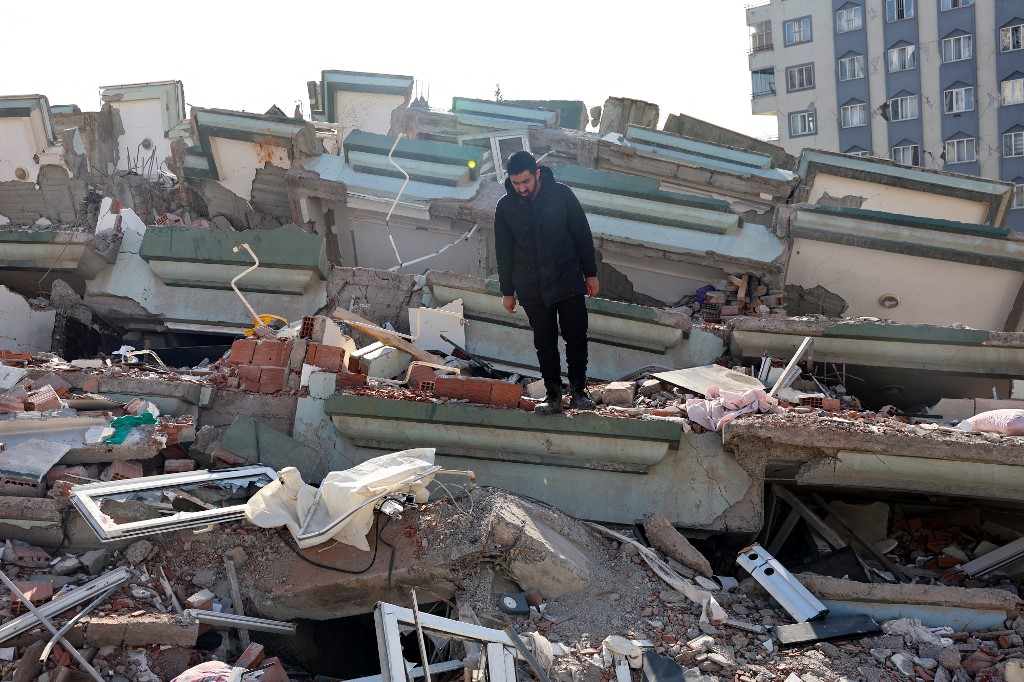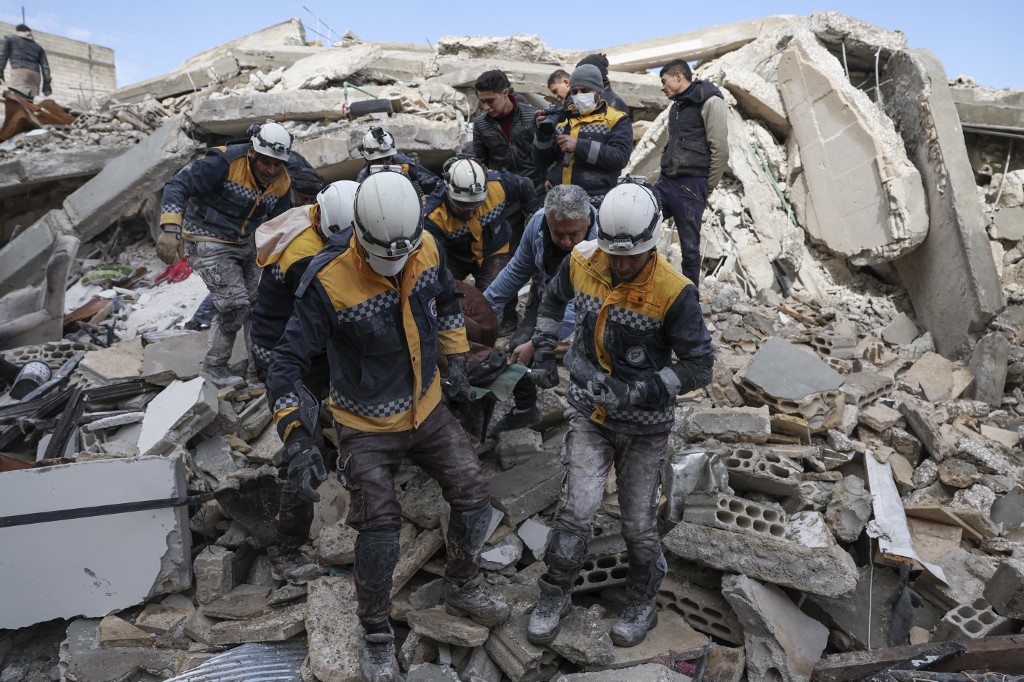Turkey-Syria earthquake: Common myths and theories debunked

With the devastation of the earthquakes in Turkey and Syria affecting over 23 million people since 6 February, thousands of photos and videos have been shared online with tips and advice.
So far, the death toll has surpassed 11,000 people, making the earthquakes some of the worst since 1999.
With people scrambling for information on what to do during an earthquake and concerned about aftershocks or how to predict future earthquakes, Middle East Eye has clarified some common myths by speaking to experts.
1. 'Animals can sense an upcoming earthquake'
Often, when earthquakes strike, videos and photos of animals behaving "abnormally" or fleeing from the location of the tremors go viral on social media.
New MEE newsletter: Jerusalem Dispatch
Sign up to get the latest insights and analysis on Israel-Palestine, alongside Turkey Unpacked and other MEE newsletters
Over time, this has led people to believe that animals are able to sense when a natural disaster is about to strike.
During the 2004 Boxing Day Tsunami, which had an epicentre off the west coast of northern Indonesia, many images showed animals fleeing towards higher ground.
Other accounts said that elephants were seen running away towards safety and that bats were seen flying in a frenzied state. And some eyewitnesses described scenes of spiders crawling up trees and dogs barking in fear,
In Turkey, people shared videos online of birds behaving strangely and flying frantically before the recent quakes. The videos were shared over 15,000 times, with people saying that the behaviour had been a warning of what was about to come.
Many believe that animals possess a "sixth sense" which allows them to feel when a natural disaster is about to occur, but experts believe that what actually happens is something completely different.
According to Judith Hubbard, an earthquake scientist and geologist, animals cannot predict earthquakes.
“The first two types of earthquake waves to arrive, P and S waves, are less violent than the later surface waves. Some animals may be reacting to these smaller levels of shaking, which can arrive tens of seconds before the more destructive surface wave shaking,” she told Middle East Eye.
Hubbard says this may be the reason people think animals are “predicting” the earthquake, when in reality, they are just reacting to something humans are less sensitive to.
“This misconception might also be from people searching for meaning after a disaster,” she says.
“Dogs may start barking on a normal night, or frogs hop across a road. It is only if there happens to be an earthquake that this normal action is imbued with special significance.”
2. 'The triangle of life theory'
The "triangle of life" theory for surviving earthquakes is the belief that people should position their furniture a certain way or stand next to big furniture during an earthquake, so when the ceiling falls, it crushes the item and leaves a gap next to it where you can be safe.
Although it's unclear where the theory originates, it's widely believed to have been popular in Turkey in the early 2000s. In the aftermath of earthquakes, many people allegedly identified gaps left by heavy furniture that were similar to the shape of a triangle.
“Because buildings are built differently, there is no single best universal strategy to stay safe in an earthquake,” Hubbard explains.
“In the United States, the "triangle of life" is not recommended because construction techniques make it less likely that buildings will collapse. In this case, the greatest hazard may be falling objects, such as lamps or pieces of masonry,” she added.
“In buildings like this, it is recommended that people 'duck and cover' under a piece of strong furniture to protect against the risk of being hit by something falling.”
Hubbard also says that a good practice to minimise the risk of falling objects is to prepare in advance by securing loose objects.
While it is possible that during the collapsing of buildings empty spaces have been left near strong pieces of furniture, Hubbard believes there are no reputable studies evaluating the effectiveness of this theory, meaning that it could be dangerous to rely on it.
Experts believe that all buildings should be constructed to better seismic standards in order to avoid the risk of collapse and the hazards of falling objects.
3. 'The best thing to do is run outside when an earthquake strikes'
Another commonly held belief is the idea that the best thing to do when an earthquake hits is to run outside.
While Hubbard and other earthquake experts believe that the best place to be during an earthquake is usually outdoors, away from the potential of falling objects, running during the event itself can be dangerous.
“The best practice is to drop to your hands and knees, cover your head and neck with your arms, and if possible, crawl underneath a sturdy object for shelter and hold on to it,” Hubbard says.
Other experts, including Rong-Gong Lin, a San Francisco-based reporter who specialises in earthquake safety issues, say that staying indoors during an earthquake can sometimes be a safer option too, as it means you are away from falling power lines, trees that have the potential to fall and crush you, and crumbling buildings.
While buildings are often damaged during an earthquake, they often remain intact, making the option of staying inside sometimes safer than running outside.
“After the shaking has ended, however, it is a good idea to evacuate the building and find an open place. Buildings may be damaged by the earthquake and collapse in later aftershocks. Do not remain near the facades of buildings and glass and other debris may be loose,” Hubbard explains.
Often, aftershocks can continue for days or months, so experts recommend following official guidance from authorities and officials on what to do in an earthquake-impacted area.
4. 'Earthquakes occur during bad or extreme weather'
Earthquakes have nothing to do with bad or extreme weather. Instead, they are caused by the movement of tectonic plates.
These land masses, which make up the outermost shell of the Earth, are constantly moving and rubbing against each other. Earthquakes most often occur at the plate's fault lines, which are large fractures on the planet's surface.
As plates are forced up against and under each other, two plates can get "stuck" due to friction.
When these plates finally get "unstuck", a build-up of pressure is released and a huge amount of energy is felt in the form of earthquakes - or tsunamis when tectonic plates converge under bodies of water.
5. 'Earthquakes are rare'
Another common misconception is that earthquakes are rare occurrences, but this is not the case.
While large earthquakes, similar to the scale of the one that hit Turkey and Syria this week, are less frequent, smaller ones happen all the time.
“Earthquakes are happening all over the world, all the time. Most of these earthquakes are small and aren’t noticed,” says Hubbard.
“For instance, in the last day there have been earthquakes detected in Indonesia; Argentina; Taiwan; Japan; Hawaii; the Dominican Republic; Panama; California; and many other places,” she added.
According to the United States Geological Survey, on average, the earth experiences around 20,000 earthquakes every year. However, data shows that each year the earth experiences around 15 large-scale earthquakes that have a 7.0 magnitude.
This article is available in French on Middle East Eye French edition.
Middle East Eye delivers independent and unrivalled coverage and analysis of the Middle East, North Africa and beyond. To learn more about republishing this content and the associated fees, please fill out this form. More about MEE can be found here.








